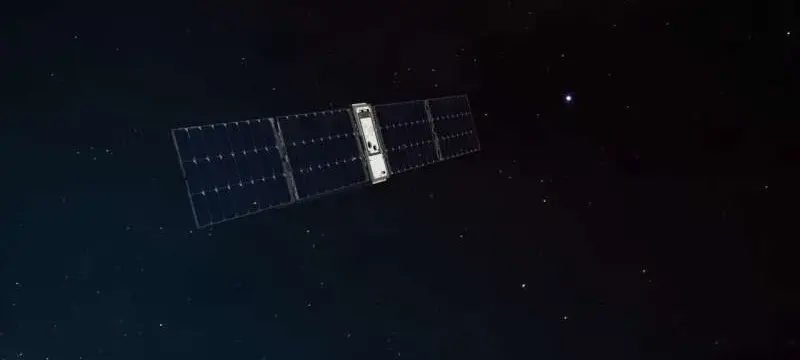BurstCube, NASA’s shoebox-sized satellite designed to study the universe’s most powerful explosions, is on its way to the International Space Station.
The spacecraft is traveling on the 30th mission of SpaceX Commercial Supply Services, launching from Launch Complex 40 at Space Force Station in Cape Canaveral, Florida, on Thursday, March 21 at 4:55 PM ET. After arriving at the station, the BurstCube will be unpacked and then launched into orbit; here it will detect, locate and study gamma-ray bursts, which are short, high-energy bursts of light.
“BurstCube may be small, but in addition to studying these extreme phenomena, it tests new technologies and provides important experience to early-career astronomers and aerospace engineers,” said Jeremy Perkins, principal investigator for BurstCube at NASA’s Goddard Space Flight Center in Greenbelt. . ,Maryland.
Brief gamma-ray bursts usually occur after collisions of neutron stars, which are extremely dense remnants of massive stars that explode in supernovae. Neutron stars can also emit gravitational waves, ripples in the fabric of space-time as they spiral together.
Astronomers are interested in studying gamma-ray bursts using light and gravitational waves because each can teach them about different aspects of the event. This approach is part of a new way of understanding the cosmos called multimessenger astronomy.
Collisions that create short bursts of gamma radiation also produce heavy elements such as gold and iodine, which are essential for life as we know it. To date, the only joint observation of gravitational waves and light from a single event called GW170817 occurred in 2017. This was a milestone in multi-messenger astronomy, and since then the scientific community has been hoping and preparing for other simultaneous discoveries.
“BurstCube detectors are angled so that we can detect and localize events over a large area of the sky,” said Israel Martinez, a researcher and member of the BurstCube team at the University of Maryland, College Park and Goddard.
“Our current gamma-ray missions can only see 70% of the sky at any given time because Earth blocks their view. Increasing our coverage with satellites like BurstCube increases our likelihood of capturing more bursts coinciding with gravitational wave detections.”
The main BurstCube device detects gamma rays with energies between 50,000 and 1 million electron volts. (For comparison, visible light is 2 to 3 electron volts.)
When gamma radiation hits one of BurstCube’s four detectors, it hits a layer of cesium iodide called a scintillator, which converts it into visible light. The light then enters another layer, an array of 116 silicon photomultipliers, which converts it into a pulse of electrons that the BurstCube measures. For each gamma ray, the team sees a single pulse in the device’s reading, providing its exact arrival time and energy. Corner detectors provide the team with information about the general course of the incident.
BurstCube belongs to a class of spacecraft called CubeSats. These small satellites come in a variety of standard sizes, based on a cube 10 centimeters (3.9 in) in diameter. CubeSats provide affordable access to space to advance revolutionary science, test new technologies, and help train the next generation of scientists and engineers in mission design, construction, and testing.
“We were able to order many parts of the BurstCube, such as solar panels and other off-the-shelf components that have become standard for CubeSats,” said Julie Cox, BurstCube mechanical engineer at Goddard. “This allowed us to focus on new aspects of the mission, such as in-house components and the device that will demonstrate how next-generation miniature gamma-ray detectors work in space.”
BurstCube is managed by NASA’s Goddard Space Flight Center in Greenbelt, Maryland. BurstCube collaborations include the University of Alabama at Huntsville; Maryland State University, College Park; University of the Virgin Islands; University of Washington Space Research Association; Naval Research Laboratory in Washington; and NASA’s Marshall Space Flight Center in Huntsville.













